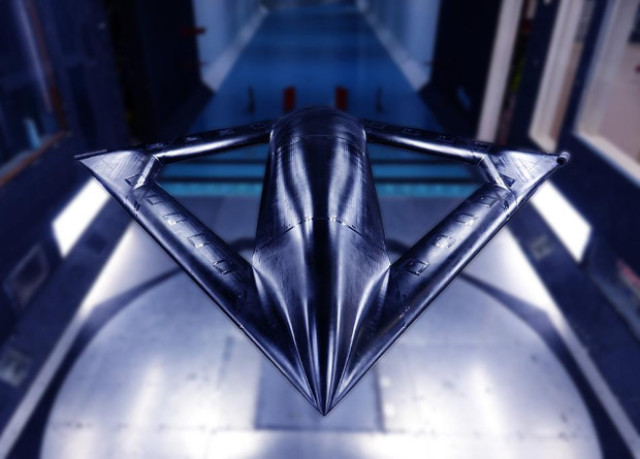The American company Aurora Flight Sciences showed a model of the aircraft, the project of which initially provides for the absence of any mechanization necessary for flight control. According to Aviation Week, developers are testing a model aircraft in a wind tunnel. The first such tests took place in 2019 in preparation for the tender of the defense advanced development Agency.
The development of the aircraft without aerodynamic mechanization is being conducted as part of the CRANE tender, announced by the us military in 2019. It involves the complete replacement of traditional mechanization, which is used for flight control, with active air flow control systems (AFC). The new systems on the aircraft will have to be used throughout the entire flight: from takeoff and landing to high-altitude flight.
It is assumed that the use of active air flow control systems will make promising aircraft easier and cheaper to maintain by reducing the number of mobile elements. The military allowed Aurora Flight Sciences, Lockheed Martin and Georgia Tech Research Corporation to participate in the CRANE tender.
The model of the aircraft created by Aurora Flight Sciences is an aircraft with two wings. The front wing, the center section of which is located in the nose, has a normal sweep. The second wing with a center section in the tail - reverse. The ends of the consoles of both wings are connected to each other. Thus, the airframe of the aircraft model in the plan is a rhombus. Details about the flight control system implemented in the model are not disclosed.
The CRANE project is designed for three stages. At the first stage, which is scheduled to be completed in the third quarter of 2021, participants must prepare a conceptual design of the aircraft. The second stage is scheduled to be completed in the second quarter of 2022. According to its results, the military will choose two companies that will be ordered to develop a preliminary design of the aircraft.
The third stage is planned to be completed by mid-2024. After this stage, the finalist of the tender will have to conduct flight tests of a reduced model of a promising aircraft.
In 2017, the British company BAE Systems conducted the first flight tests of the Magma unmanned aerial vehicle, which has a system responsible for flight control that takes some of the air from the jet engine and redirects it through channels to the nozzles on the wing and in the engine nozzle. The air is blown out of the nozzles at supersonic speed; this makes it possible to control the flight of the drone.
Vasily Sychev


